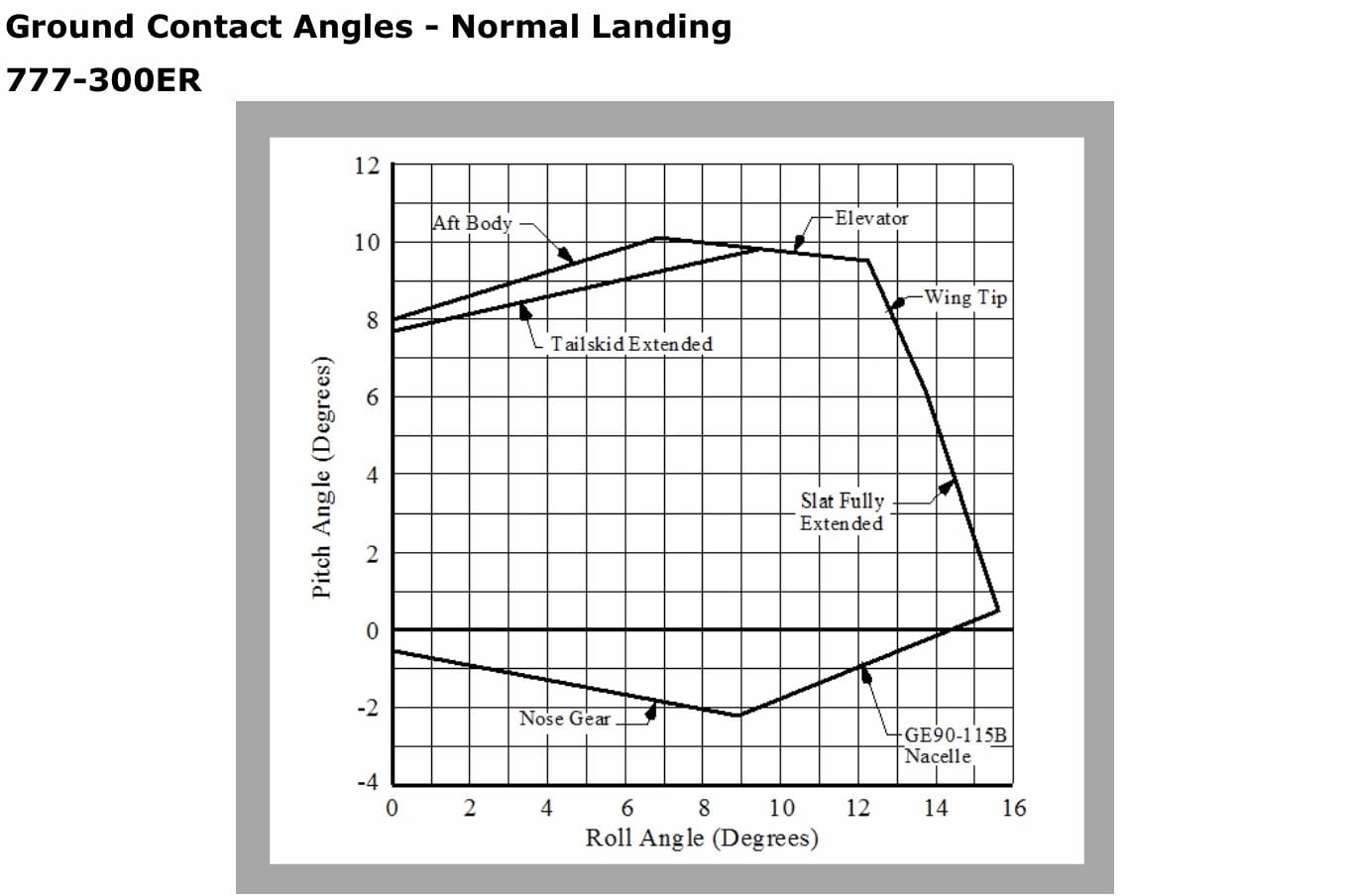777-300 Landing Tailstrike 11 Dec 2018 in Hong Kong
Join Date: Jun 2007
Location: Wanderlust
Posts: 3,407
Likes: 0
Received 0 Likes
on
0 Posts
Considering that the PF was getting the feel of the aircraft first time and below 200ft. aircraft was laterally disturbed requiring correction which wasn't adequately coming from the PF and CM1 had to intervene he might as well have postponed the first landing of the FO to another day and completed the landing himself. Two people trying to maintain the center line nobody seems to have flared. 777 is a big aircraft to successfully do all that at such a low altitude. What happened to stabilized approach concept?
Last edited by vilas; 13th Jan 2019 at 04:35.
Join Date: Jan 2008
Location: United Kingdom
Posts: 274
Likes: 0
Received 0 Likes
on
0 Posts
With a high rate of descent in conjunction with a nose high pitch attitude,
My experiences of someone's first landing on type after a long flight is a tendency to under flare and a firm arrival. I wonder if the trainee on this flight flared late and continued to raise the nose as the wheels touched, possibly aided by a Captain rapidly increasing back pressure. I'd be interested in what the nose pitch was when the tail scraped. For a normal landing the nose is raised to no higher than 5 degrees and the tail would not scrape until at least 8 degrees pitch or so. An extended flare can lead to a tail strike but that would not give a firm landing.
Only half a speed-brake
Depends
We had a tailstrike event with a 777 on departure at my airline, there was extensive damage to the aircraft
In that case the crew went through some retraining in the sim and went back to the line
If either one of the Pilots had a ‘record’ of negative events there may have been a different outcome but management was very fair, obviously it wasn’t intentional so why throw away someone’s invaluable experience?
Of course it depends on the individual Airline
Surely that cannot be an actual SOP? That sounds exceptionally prescriptive and in today's more enlightened environment of encouraging hand-flying/reduced levels of automation/raw data etc when appropriate for the prevailing conditions, it sounds almost draconian for a western airline and totally out of line with best practise.
Join Date: Feb 2013
Location: Canada
Age: 41
Posts: 43
Likes: 0
Received 0 Likes
on
0 Posts
Surely that cannot be an actual SOP? That sounds exceptionally prescriptive and in today's more enlightened environment of encouraging hand-flying/reduced levels of automation/raw data etc when appropriate for the prevailing conditions, it sounds almost draconian for a western airline and totally out of line with best practise.
Regarding what happens to said pilot, my understanding is the skipper was close to retirement so unfortunately this was his last landing. The PF will probably get further coaching and released back to line indoc (if not already having done so).
Join Date: Dec 2017
Location: home
Posts: 42
Likes: 0
Received 0 Likes
on
0 Posts

Interesting and unusual. I am aware of a tail scrape on a B777 landing due to the Vref speed manually inputted incorrectly. (Why do some people insist on manually knocking off a bit of weight for the descent and approach and typing in a revised landing weight instead of selecting the present weight figure which at worst will give you a 2 knot greater speed?)
.
.
Join Date: Feb 2013
Location: Canada
Age: 41
Posts: 43
Likes: 0
Received 0 Likes
on
0 Posts
I just wanted to correct the comment that AC mandates AP usuage. They encourage hand flying and each pilot can decide what he or she does with the automations with a few exceptions (CAT 2/3, RVSM and a few RNAV 1 operations where AP is encouraged but FD are mandated)
You’re probably right. For now I have no interest in overseas flying. One day the desire to make more money may have me bidding the 777/787 but for now, day flying and home most nights has me enjoying the non UlH flying.
I just wanted to correct the comment that AC mandates AP usuage. They encourage hand flying and each pilot can decide what he or she does with the automations with a few exceptions (CAT 2/3, RVSM and a few RNAV 1 operations where AP is encouraged but FD are mandated)
In my major european airline, we have to fly CAT II with the AP in also. I assume it was a fairly common rule now? A few years ago it said we SHOULD fly CAT II with an AP and it should never be planned to be manually flown, now we don't practice it in the sim so the rules have changed meaning that anything tighter than CAT I (eg LTS/OTS etc) must be flown with the automatics.
Crosswinds positively correlate to reduced tail clearances, although my data on that is at least 5 years out of date.
The lowest clearances that occur in normal operations is on takeoff, where a Vr error, or loss of airspeed following commencement of rotate can be nasty, but historically most strikes occur on landings where there is more clearance on a normally executed landing, but there is more variability in technique and dynamics resulting in speed variation in the flare, and variation in the pitch rate and attained pitch.
FWIW, adding a HUD makes it much easier to ensure that flares are appropriate, FPV remaining on the touchdown zone etc...





